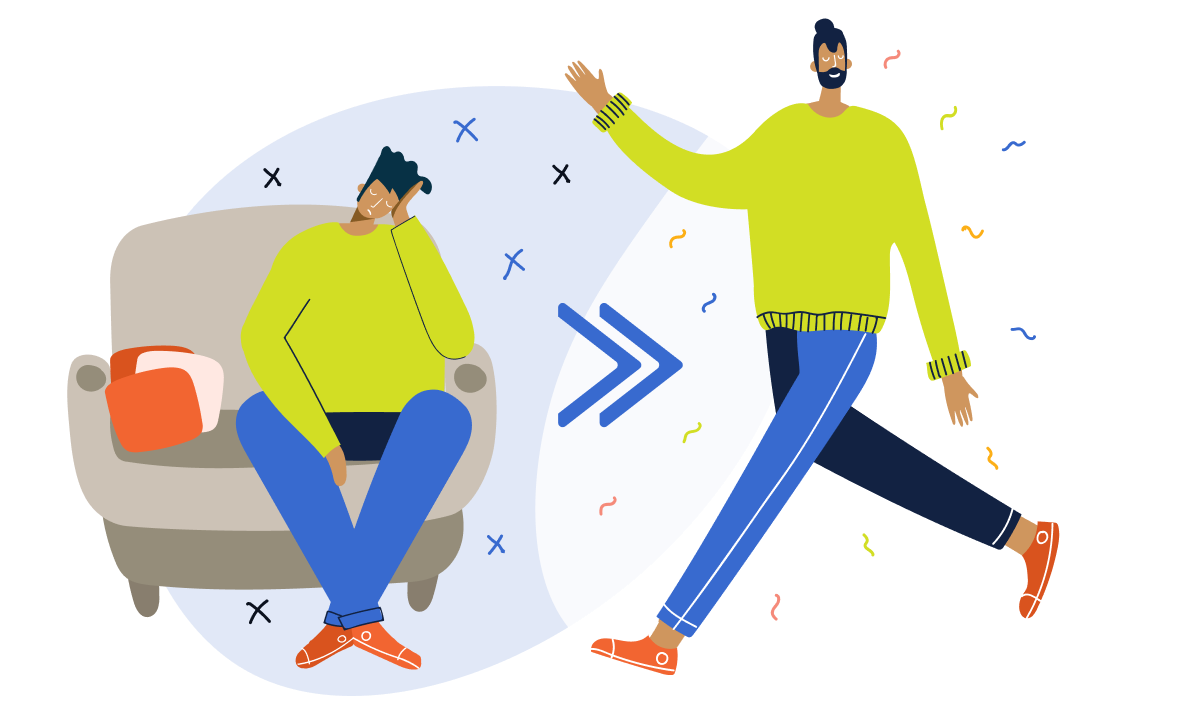Body Doubling Can Be a Total Gamechanger for People Who Struggle With Focus
 Body doubling is the practice of actively and intentionally completing tasks in the presence of someone else, and it makes a tangible difference for those who struggle to retain focus. The double doesn’t have to be doing the same task as you, they just need to be present (whether in person or via a livestream screen) and focusing on a project for the same amount of time.
Body doubling is the practice of actively and intentionally completing tasks in the presence of someone else, and it makes a tangible difference for those who struggle to retain focus. The double doesn’t have to be doing the same task as you, they just need to be present (whether in person or via a livestream screen) and focusing on a project for the same amount of time.
Body doubling and ADHD
Body doubling has also long since had a reputation as a recommended self-help strategy for neurodivergent people, especially those with attention deficit hyperactivity disorder.
If you’ve spent any time on TikTok lately, chances are you’ve scrolled past a livestream of a single person, head down, silently working.
It’s dead quiet, save for the scratching of pens or clacking of keys. For some people, this silent space is a deeply necessary tool that helps them get through their workday.
When everyone worked in an office, there was a degree of accountability present in just having your colleagues beside you. It’s much harder to get away with scrolling on your phone for 10 minutes if your deskmate can practically see over your shoulder.
But with remote work now more common, people are stuck operating solo, without company to keep them on task.
How body doubling works
While having someone nearby doesn’t sound like it would make much difference, for some it has a substantial impact on productivity and functionality.
The reasoning is twofold. First, there’s a degree of accountability to the other person’s time. They’re working with you, and just like when you’ve booked an appointment, you feel a responsibility to make sure you’re not wasting this person’s time.
Second, it gives you a model, a living reminder of what you’re meant to be doing. If you’re body doubling to get study done, seeing another person also study will serve as a reminder. Mirroring their actions keeps you on task.
The jury is still out on the cognitive reasoning behind why it works so well — some say it’s behavioral modeling, others say it’s all down to good collaborative vibes. Others even suggest mirror neurons could be responsible. Social learning theory suggests that observation and imitation are some of the most powerful learning tools at our disposal.
But regardless of the neurological trigger, what’s shown online is that for many people, it just works. And it’s also not limited to work or study. The same can also be said for cleaning, self care and even just general day-to-day life.
Standard productivity vs. gentle productivity
With hustle culture and a push to always be grinding, standard productivity models tend to skew to the perspective that if you’re not succeeding, you need to try harder. Rigorous time management schemes and productivity hacks dominate social media sites like Pinterest, with the underpinning “motivational” message often making readers feel guilty for not pushing harder.
Some lucky people may derive all the motivation they need from hustle culture without it affecting their health. For others, however, it can very quickly lead to burnout, exhaustion and toxicity.
Instead of routinely setting the bar out of reach, gentle productivity suggests relying on goals and strategies that are less hustle-focused, and trusting ourselves to get the job done regardless.
Excerpted from “The Productivity Hack That’s Taking Over TikTok” in CNET. Read the full article online for additional details on body doubling, monotasking, and more.
Source: CNET | The Productivity Hack That’s Taking Over TikTok, https://www.cnet.com/culture/internet/the-productivity-hack-thats-taking-over-tiktok | © 2022 CNET
To schedule an evaluation or to get advice, call or email a CHC Care Coordinator at 650.688.3625 or careteam@chconline.org CHC teletherapy services are available now.





